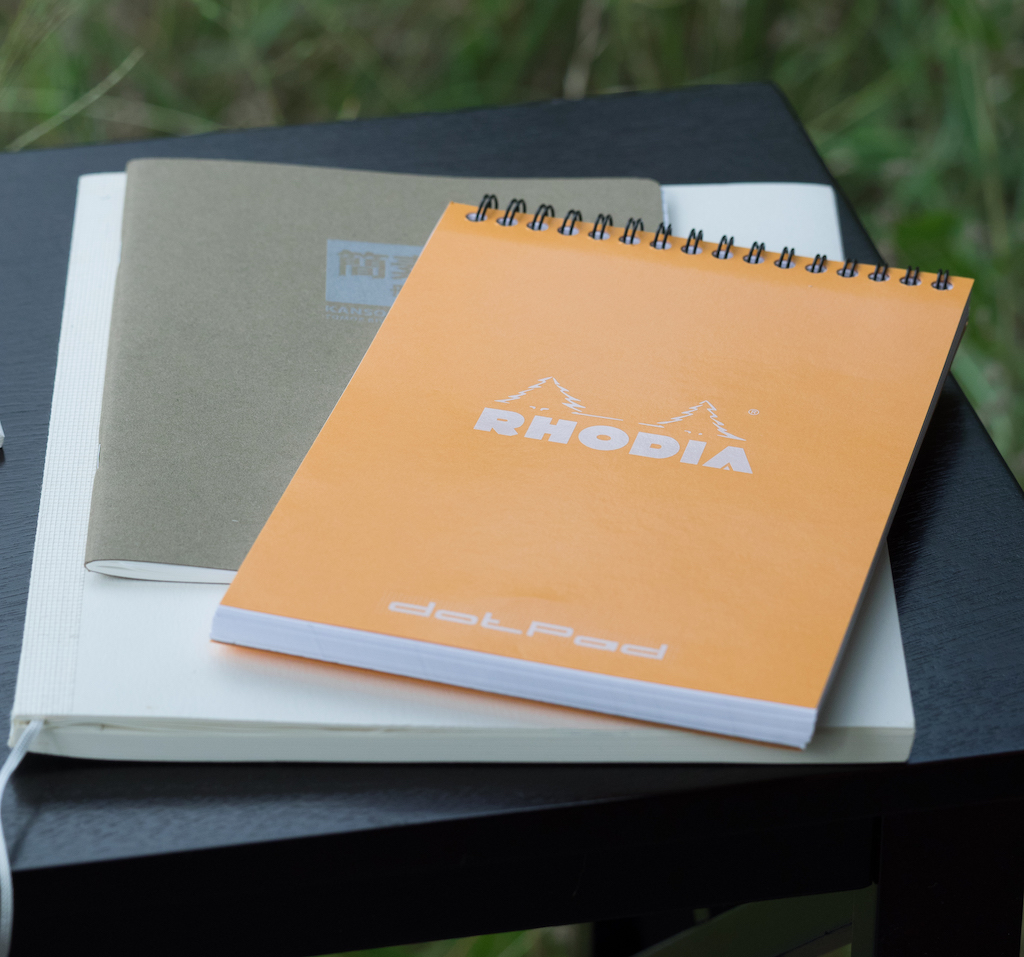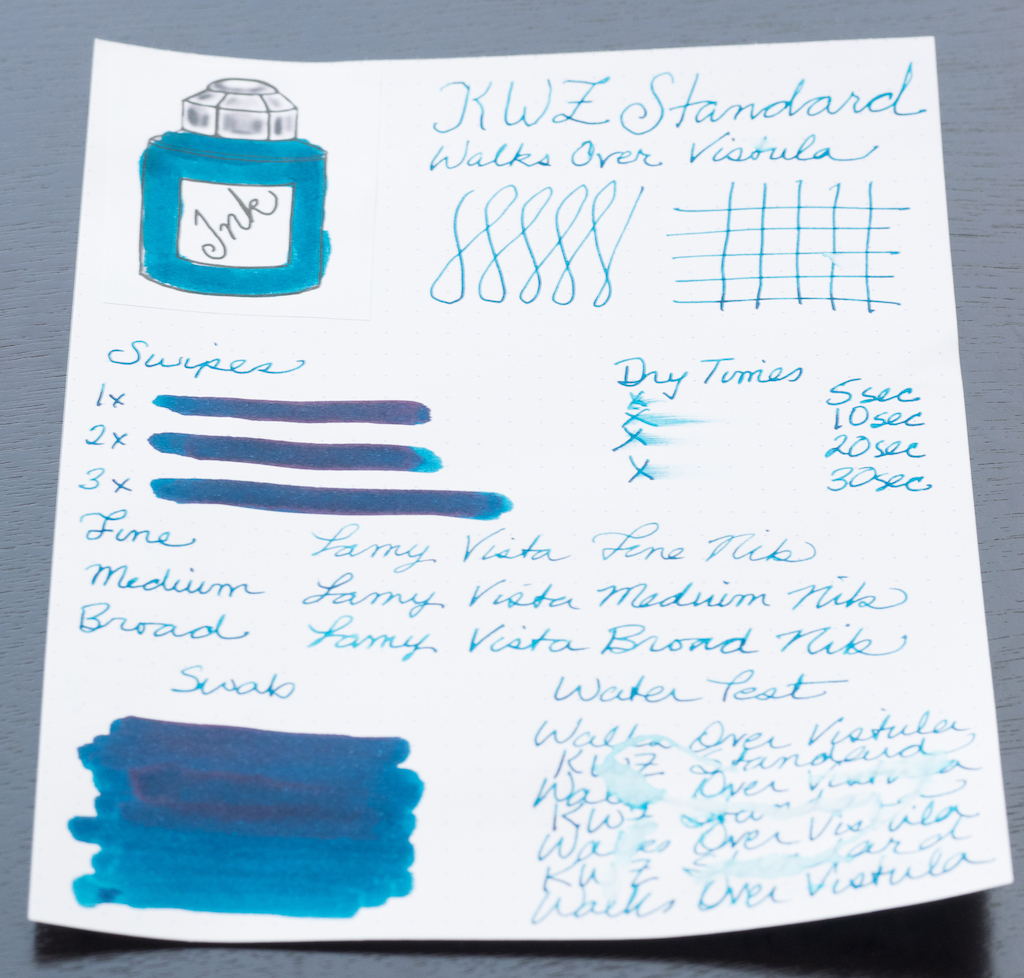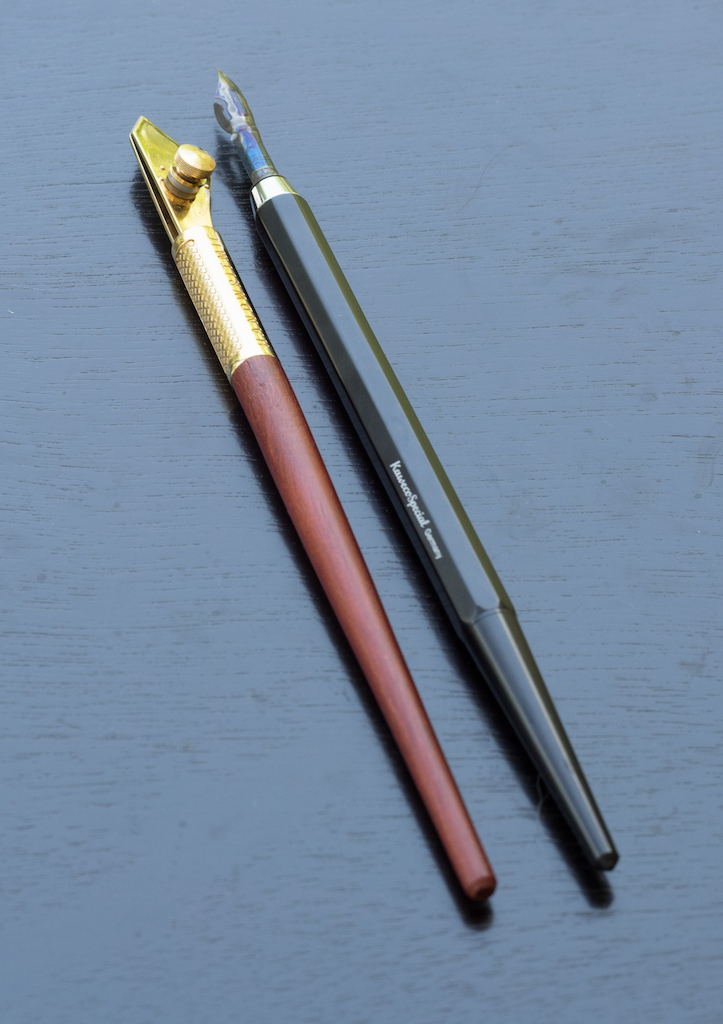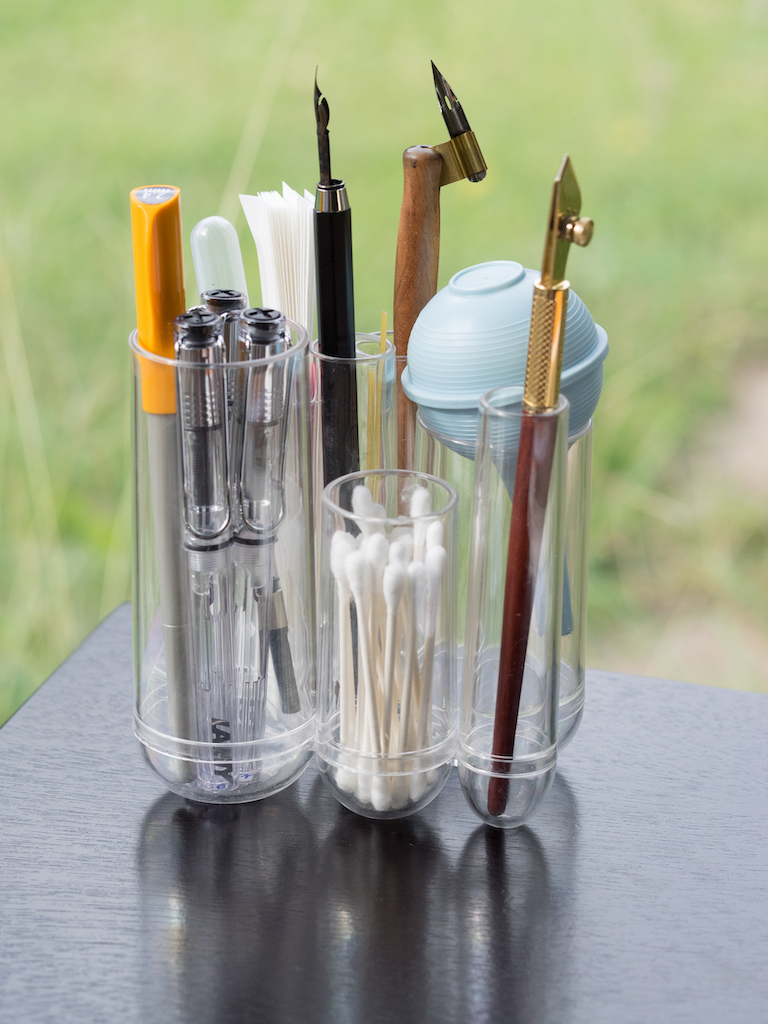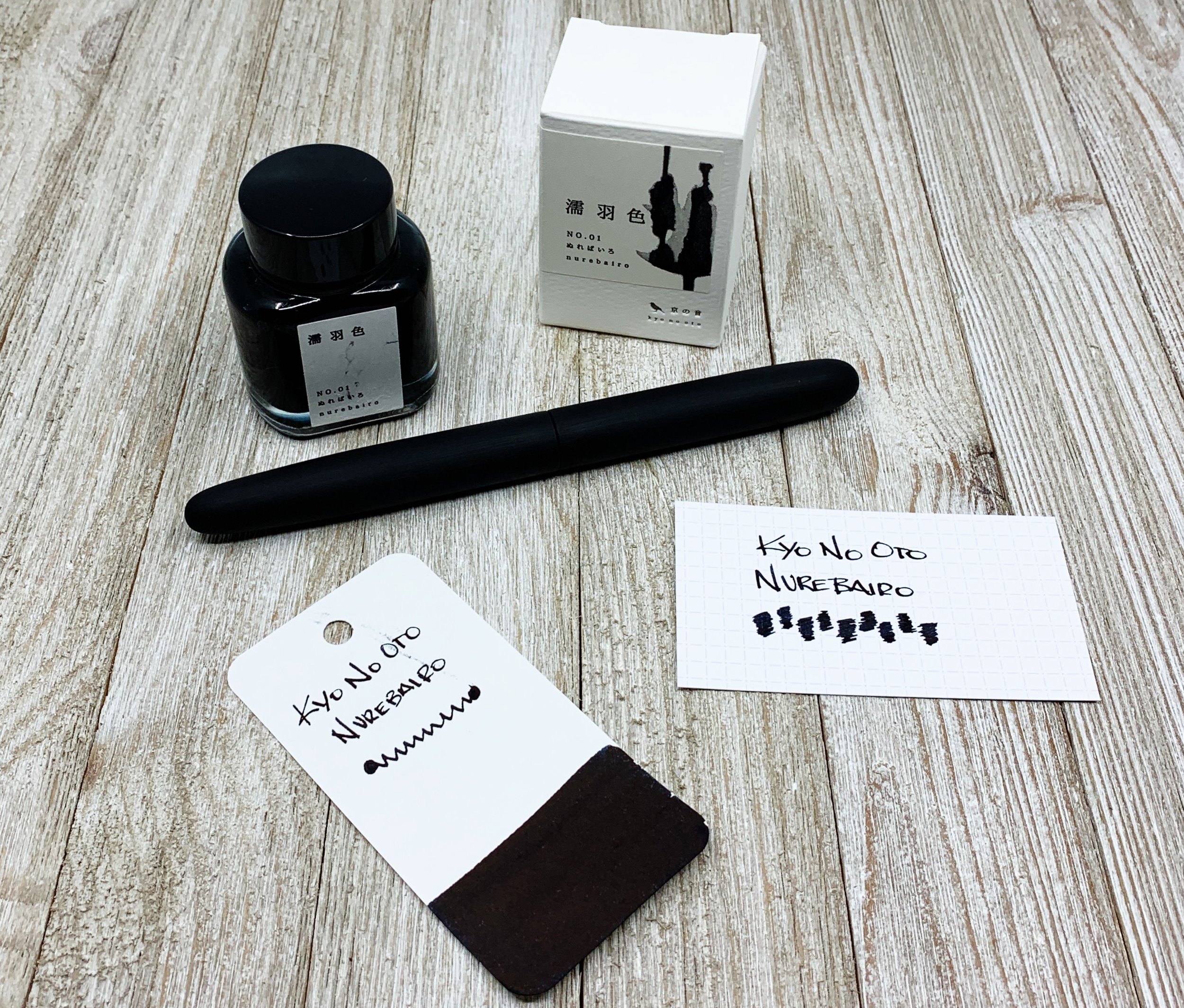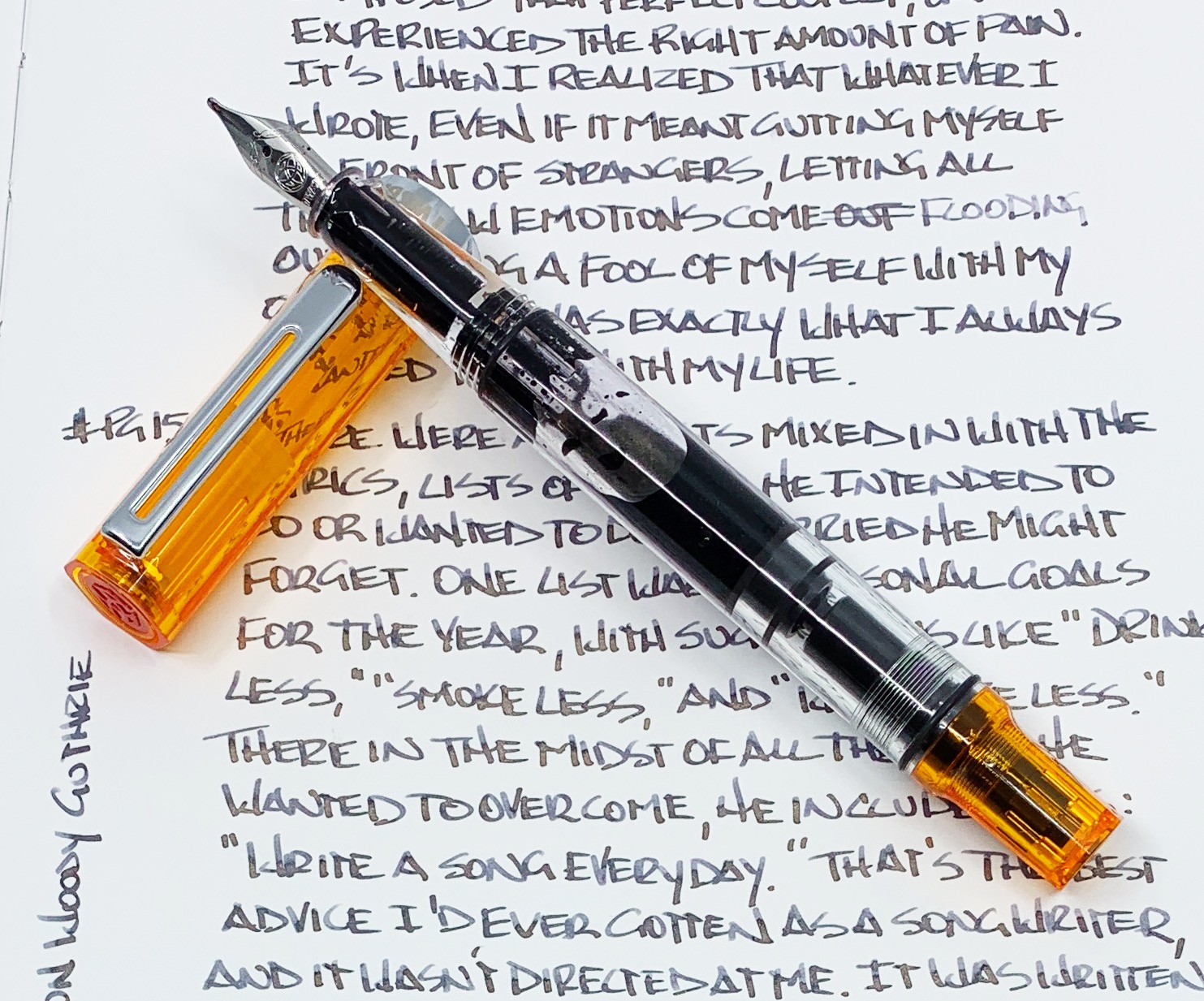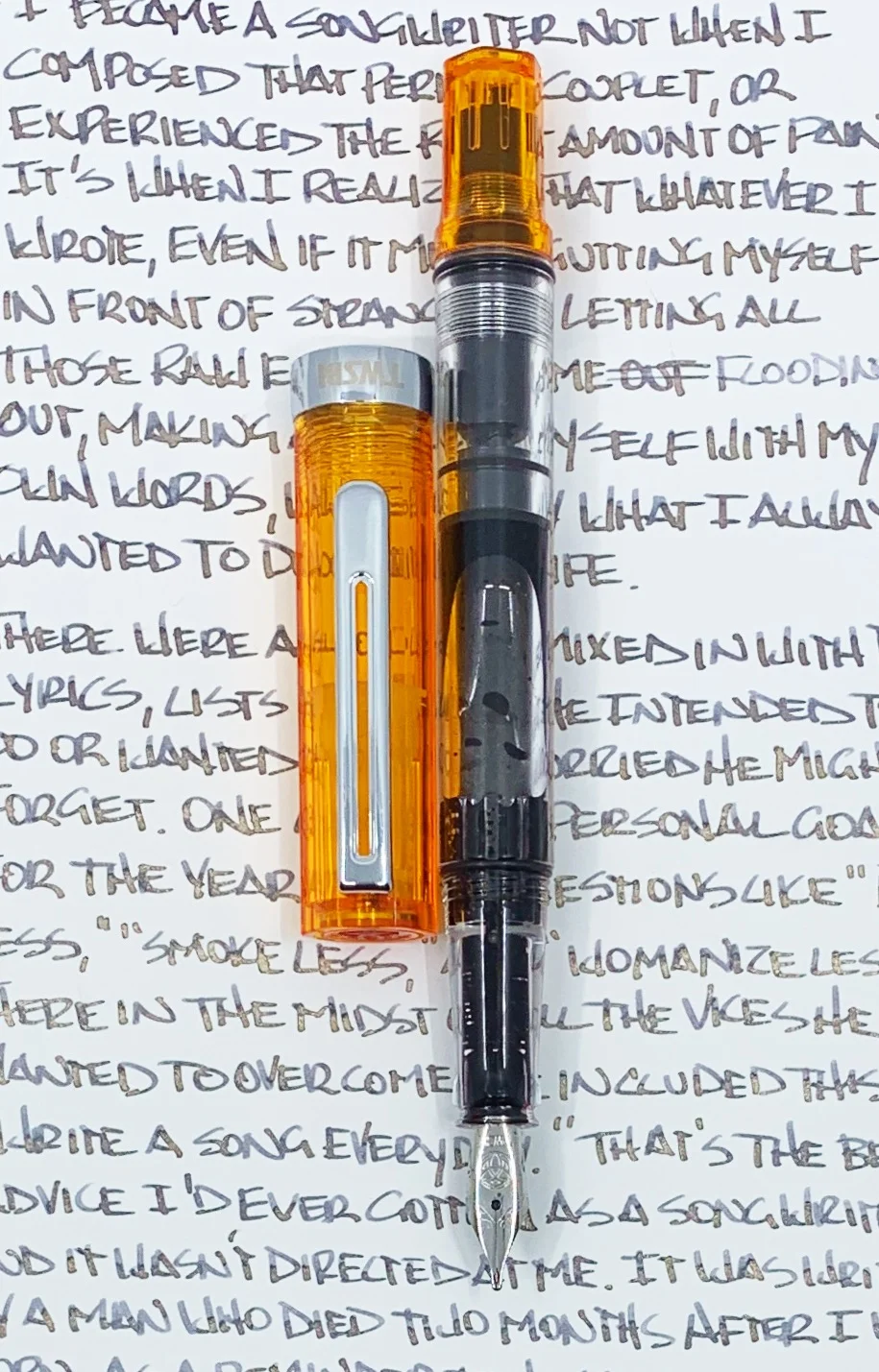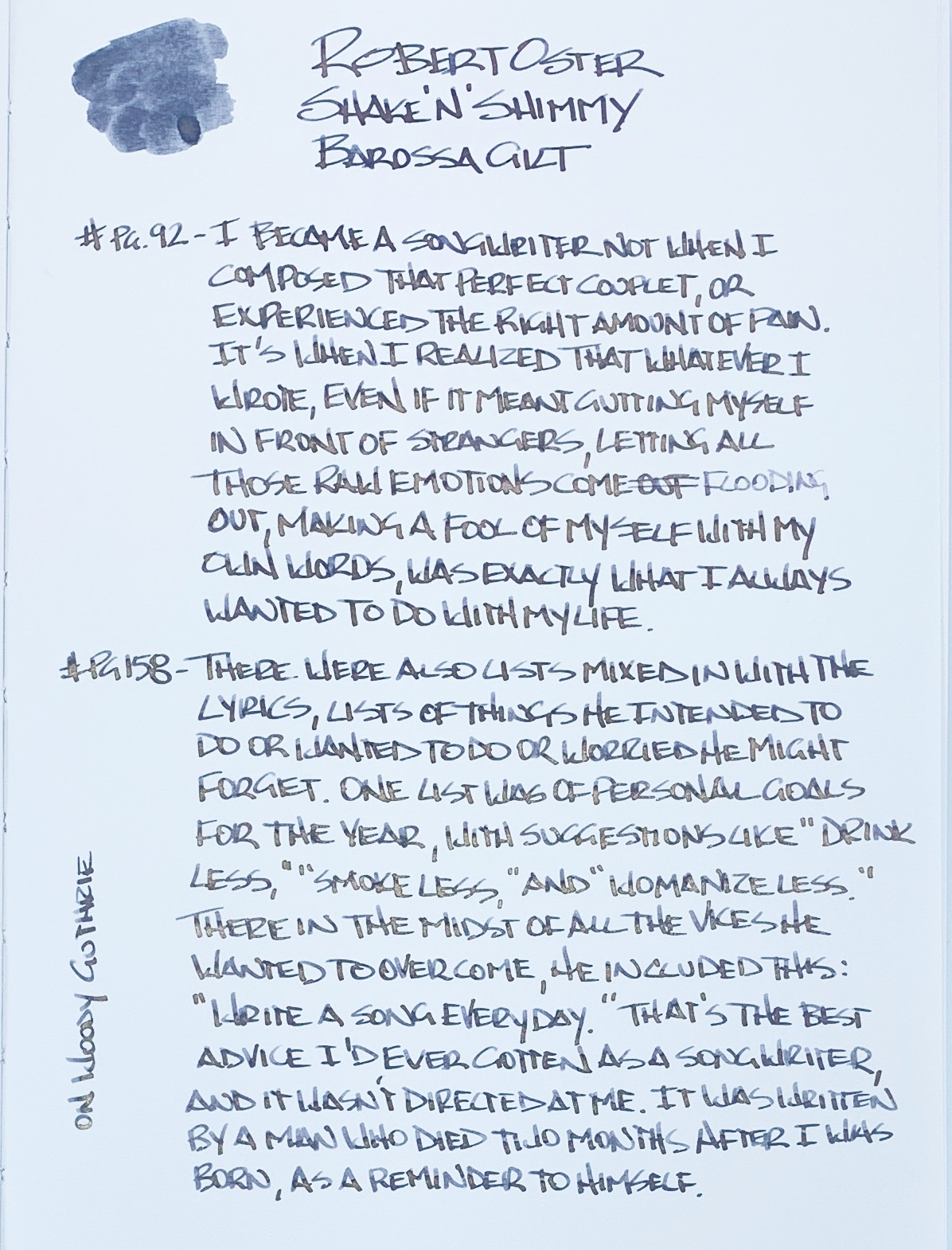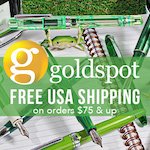(Susan M. Pigott is a fountain pen collector, pen and paperholic, photographer, and professor. You can find more from Susan on her blog Scribalishess.)
Over the years writing for Pen Addict, I’ve done many ink reviews. typically using whatever pens I had on hand. But over time I’ve accumulated some tools that I use for all my reviews. Plus, I decided to standardize how I do ink reviews so each one is more consistent.
I realize that not everyone wants to do in-depth testing of their inks (even I don’t go so far as calibrating my screen for exact color matching or swatching every single ink in my collection). But, for anyone who is interested in going beyond the occasional swab, here are the tools I use.
Paper
Although in the past I used the Maruman Septcouleur notebook for my ink tests, I switched to a Rhodia dot spiral because the Rhodia brand seems like a more popular choice among pen addicts. This is the paper I use for my primary pen testing pages.
I also test inks with a Tomoe River notebook (because this is such a popular paper) and the MD Cotton A4 plain for large lettering.
One of these days I’m going to shell out the money for an ink bottle stamp that I can use on my pen testing page. Until then, I drew my own bottle on my iPad, exported it into a Word document, duplicated it, and printed it out on regular copier paper. I paste this in the corner of the Rhodia page to add visual interest.
For ink swatches I use the wonderful Col-o-dex cards from Well-Appointed Desk. The paper is excellent for swatching. Plus, I love putting everything into my Rolodex where I can organize the swatches by color.
Another tool I use is chromatography paper. I ordered a set off of Amazon, but you can just use coffee filters or even paper towels. I like the strips I bought because they are consistent. I cut them in half, poke a little hole in the top, stick a piece of dry spaghetti through the hole, put tap water in a glass, and let the ink do its thing.
Pens
I use several pens to test my inks. Two instruments that I’ve used consistently in all my ink reviews are my Kaweco straight nib holder with a Brause Blue Pumpkin nib and my Handwritmic Ruling Pen. The Kaweco/Blue Pumpkin is for writing the ink name and creating swirls on my Col-o-ring Rolodex swatch cards. The Handwritmic is for big juicy lettering to test for shading and sheen on the MD Cotton paper.
I wanted to provide consistent examples of a fine, medium, and broad nib in all my reviews. That’s hard to do if you’re using different brands of pens. So, I decided to purchase some pens just for ink testing. After researching various possibilities, I chose the Lamy Vista ($29.60). Although I could have gotten some piston-filler pens for around the same price, I wanted a brand with a converter because they’re easier to clean. Pilot Metropolitans were first on my list, but they only come in fine and medium nibs. So, I purchased three Lamy Vistas in fine, medium, and broad, and one Lamy converter ($5.00), which I can easily move from pen to pen as I test the ink. This way I have a consistent writing sample with a western fine, medium, and broad nib.
Other Tools
An obvious additional tool is a cotton swab. I go through a lot of these with each review, swabbing the Col-o-dex cards and the ink testing page.
Another tool that comes in handy for making ink splats and doing water testing is a fine-tipped pipette. Although it’s disposable, I use it over and over, rinsing it out in between uses. My first one developed a leak, and I’m now on my second one. These are quite inexpensive and you can buy them in bulk (as in 200 pipettes!) from places like Amazon.
I found a toiletries holder at Target where I store my supplies. I love this one because it has a variety of round tubes to hold my pens, chromatography strips, and cotton swabs.
The last tool is my camera. I use an Olympus OMD EM1 with a 60mm macro lens for all my reviews. I shoot in our Florida Room using natural light, though occasionally I use a light box (but setting it up is a pain and the cats always climb in and get hair all over, so . . . yeah). In order to get semi-accurate color, I have to brighten the exposure when I take the photo and when I process it in Lightroom.
So, there you have it: my wondrous ink testing kit!
(Most of the above supplies were purchased with my own funds. A few items, such as the Col-o-dex Cards and Tomoe River Paper Notebook, were provided by a retailer for Pen Addict reviews.)


